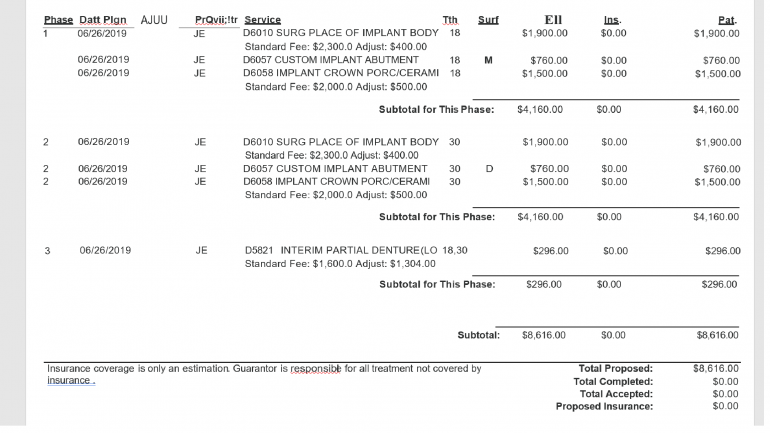
Dental Code D7291: Transseptal fiberotomy/supra crestal fiberotomy, by report
Dental Code D7291 refers to a specific dental procedure known as transseptal fiberotomy/supra crestal fiberotomy. This code is used to describe a technique performed by dentists to address certain dental conditions related to the fibers that connect the gums to the teeth.
What does Dental Code D7291 mean?
Dental Code D7291, transseptal fiberotomy/supra crestal fiberotomy, is a dental procedure that aims to address specific issues related to the fibers that connect the gums to the teeth. These fibers, known as transseptal or supra crestal fibers, play a crucial role in supporting the teeth and maintaining their stability. However, in certain cases, these fibers can contribute to dental problems such as tooth mobility, improper tooth alignment, or the recurrence of gum disease.
Patient Preparation
Before initiating the transseptal fiberotomy/supra crestal fiberotomy procedure, the dentist will ensure the patient's comfort. This typically involves administering local anesthesia to numb the area being treated. Anesthesia helps to minimize any potential discomfort during the procedure and ensures a pain-free experience for the patient.
Accessing the Treatment Area
Once the patient is comfortable, the dentist will carefully access the treatment area. This typically involves gently retracting the gum tissue to expose the targeted teeth and surrounding fibers. The dentist will use specialized instruments, such as retractors and dental mirrors, to provide a clear view of the area and facilitate precise manipulation of the tissues. During the process of accessing the treatment area, the dentist takes utmost care to ensure patient comfort and safety. By gently retracting the gum tissue, the dentist creates a clear field of view to work with. Specialized instruments like retractors and dental mirrors are employed to aid in the procedure. These instruments not only assist in exposing the targeted teeth and surrounding fibers, but they also help the dentist in achieving precise manipulation of the tissues. With a clear view and enhanced control, the dentist can perform the subsequent steps of the procedure with accuracy and efficiency.
Fiberotomy Technique
The fiberotomy technique involves severing or releasing the transseptal or supra crestal fibers that attach the gums to the teeth. This step aims to eliminate any tension or pressure caused by these fibers, allowing for improved tooth stability and alignment. The dentist will perform this procedure selectively, based on the specific dental condition being addressed. The technique may involve using a scalpel, laser, or electrocautery device to cut or remove the fibers.
Transseptal fibers: Transseptal fibers are collagenous fibers that run horizontally between adjacent teeth, connecting the gums. They provide stability and support to the teeth. However, in certain cases, these fibers may contribute to tooth mobility or improper alignment, necessitating a fiberotomy procedure.
Supra crestal fibers: Supra crestal fibers are collagen fibers that extend from the gums towards the tooth crown in the supra crestal region. These fibers play a crucial role in maintaining the position and alignment of the teeth. By addressing issues related to supra crestal fibers, dentists can improve tooth stability and alignment.
The fiberotomy technique is a meticulous procedure that targets the transseptal or supra crestal fibers connecting the gums to the teeth. By selectively severing or releasing these fibers, the dentist aims to alleviate tension and pressure, ultimately improving tooth stability and alignment. The decision to perform a fiberotomy is based on the specific dental condition being addressed and the patient's unique circumstances. Depending on the case, the dentist may utilize different tools such as a scalpel, laser, or electrocautery device to cut or remove the fibers. These instruments allow for precise and controlled intervention, ensuring optimal results for the patient's dental health. The choice of technique and instruments will be determined by the dentist's professional judgment and the specific needs of the patient's condition.
Suturing and Post-Procedure Care
After completing the fiberotomy, the dentist may suture the gum tissue back into place. Suturing helps to promote proper healing and ensure optimal tissue adaptation. The patient will receive instructions on post-procedure care, including oral hygiene practices and medications, if necessary. It is crucial to follow these instructions to ensure optimal healing and recovery.
Summary of Dental Code D7291
Dental Code D7291, transseptal fiberotomy/supra crestal fiberotomy, involves a series of steps aimed at addressing dental conditions related to the transseptal or supra crestal fibers that connect the gums to the teeth. By selectively severing or releasing these fibers, dentists can improve tooth stability, address tooth mobility, and enhance tooth alignment. The procedure includes patient preparation, accessing the treatment area, performing the fiberotomy technique, and concluding with suturing and post-procedure care.
In conclusion, Dental Code D7291 allows dentists to effectively address specific dental conditions by utilizing the transseptal fiberotomy/supra crestal fiberotomy procedure. By understanding this code and the associated procedure, patients can have a clearer understanding of their dental treatment options and what to expect during the process. If you require dental treatment, consult with a qualified dentist to discuss your specific condition and treatment options.
Explore new horizons in dental savings with Dr. BestPrice! Your smile journey starts now.
